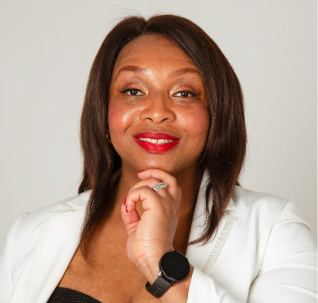In July, journalists across Africa gathered in Nairobi, Kenya to showcase the reporting produced by African women working in a variety of media.
At this year’s African Women in the Media (AWiM) conference, which was started in 2016 by Dr. Yemisi Akinbobola, and has as its mission to positively impact the way media functions in relation to women, speakers in one panel explored the approaches and interventions women media practitioners are using to counter misinformation.
Marceline Nyambala, the executive director of the Association of Media Women in Kenya, moderated the session, which was titled “Beyond Misinformation, Fake News and Post-truth,” during which the speakers further examined the political, technological, and societal contexts of misinformation in Africa, and what can be done to counter its spread.
The following are key highlights from the panel discussion.
The misinformation landscape in Kenya
Ann Ngengere, the deputy editor of PesaCheck, East Africa’s first public finance fact-checking initiative, which focuses its efforts on claims made by public officials about budgets and public finance, explained that Kenyans are routinely exposed to misinformation from a variety of sources. She added that confirmation bias — when an individual seeks out sources that confirm what they think is true instead of gathering the actual facts — is a common problem.
Ngengere also discussed the challenges facing fact checkers in the country, notably a lack of funds and access to timely data.
“The challenge of story lifespan is [that] the data needed for a fact-check may become available long after the claim was made. [This] is a major drawback,” she said.
Finally, she addressed the issue of limited circulation of the findings from fact checks. “Unless the fact checks touch on something very popular, they often have limited circulation,” she explained.
As one of the panel speakers, I drew from my experience working with newsrooms in Nigeria as an ICFJ TruthBuzz fellow. I shared the strategy I used to help fact checkers reach wider audiences, which revolved around turning fact check reports into visually appealing content, such as short videos and social media published in English and local languages.
I argued that a mobile-first approach is crucial for any media firm which seeks to reach the growing base of digital natives on the continent.
“The rise of digital as the central means of acquiring information has effectively transformed news behaviour from a high time spent, low frequency, behavioral pattern to a high frequency, low time spent, behavioral pattern,” the BBC Beyond Fake News Report notes — a point I highlighted during the panel.
Investing in news literacy
The panel’s five speakers unanimously agreed on the need to invest in news literacy projects as a way to inoculate audiences against misinformation. Citizens need to be informed by thinking about news sources beyond the person that is sharing them.
“Audiences need to know who to ask for facts,” Ngengere said.
Lilian Mukoche, a radio producer and presenter at 103.9 MMUST FM, a community radio station for Masinde Muliro University of Science and Technology in Kakamega County, Kenya, shared this view. “Ours is a radio station in an institution of higher learning, therefore informing people about news literacy is a high priority. Citizens need to know that, as individuals, sharing responsibly is important,” Mukoche said.
Mukoche also made a strong case for online accountability. Businesses and technology companies should invest in tools that identify fake news, and reduce incentives for those who profit from misinformation, she argued.
Back to journalism basics
Discussing the political, technological, and societal context in which the concepts of misinformation, fake news and post-truth should be understood and countered, Pamella Makotsi Sittoni, the managing editor of the Nation Media Group, said that now is the ideal time for the journalism community to get back to the basics, by producing journalism that is in the public interest.
“The public is now exposed to all kinds of unfiltered information—including hoaxes, misinformation, fake news and propaganda—across all dissemination platforms,” Sittoni said. “The news industry must provide high quality journalism in order to build public trust, and correct fake news and misinformation without legitimizing them.”
As internet penetration continues to grow in many African countries, media organizations fighting misinformation need to understand the digital landscape well enough to adopt strategies that effectively empower citizens to know when to disregard misleading or incorrect content.
This article was written by Hannah Ojo and first published on ijnet.org



